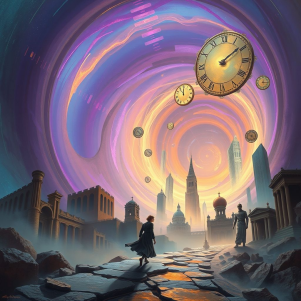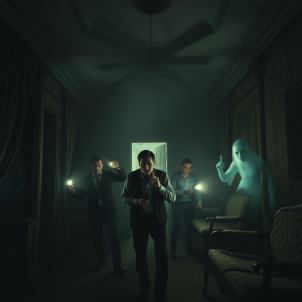
Spirits in the Machine: The Rise of Paranormal Technology
In recent years, the world of paranormal investigation has undergone a significant transformation. Gone are the days of simplistic ghost hunting equipment, replaced by a new wave of cutting-edge technology designed to detect and interact with the spirit world. This phenomenon, known as paranormal technology, has revolutionized the way investigators approach the mysterious and often misunderstood realm of the paranormal.
The Evolution of Paranormal Investigation
Paranormal investigation has been around for centuries, with early attempts to communicate with the dead dating back to ancient civilizations. However, it wasn’t until the mid-20th century that the field began to take shape as a modern discipline. The development of equipment such as EMF meters, infrared cameras, and digital recorders allowed investigators to capture evidence of paranormal activity, but these tools were often limited in their capabilities.
The advent of modern technology has changed the game, with the rise of advanced sensors, artificial intelligence, and machine learning algorithms. These innovations have enabled investigators to collect and analyze vast amounts of data, leading to a greater understanding of the paranormal phenomenon.
The Role of AI in Paranormal Investigation
Artificial intelligence (AI) has become a key player in paranormal investigation, allowing researchers to analyze large datasets and identify patterns that may indicate spirit activity. AI-powered algorithms can detect anomalies in environmental data, such as unusual temperature fluctuations or electromagnetic spikes, which may be indicative of paranormal presence.
Moreover, AI-powered chatbots and virtual assistants are being used to facilitate communication with spirits. These systems use natural language processing to interpret and respond to voice commands, potentially allowing investigators to engage in real-time conversations with entities from beyond the grave.
The Internet of Things (IoT) and Paranormal Investigation
The Internet of Things (IoT) has also had a significant impact on paranormal investigation. With the proliferation of smart devices and sensors, investigators can now monitor and control their equipment remotely, allowing for more efficient and effective data collection.
The IoT has also enabled the development of "smart haunted houses," where sensors and cameras are integrated into the environment to create a comprehensive monitoring system. This allows investigators to track and analyze paranormal activity in real-time, providing a more detailed understanding of the phenomenon.
The Future of Paranormal Technology
As technology continues to advance, we can expect to see even more innovative applications in the field of paranormal investigation. The use of virtual and augmented reality may allow investigators to create immersive environments that facilitate spirit communication, while advancements in quantum computing may enable the development of more sophisticated AI-powered analysis tools.
Furthermore, the integration of paranormal technology with other fields, such as psychology and neuroscience, may provide new insights into the human experience and the nature of consciousness. By exploring the intersection of technology and the paranormal, researchers may uncover new understandings of the human condition and the mysteries that lie beyond.
Conclusion
The rise of paranormal technology has marked a significant shift in the way we approach the mysterious and often misunderstood realm of the paranormal. As technology continues to evolve, we can expect to see even more innovative applications in this field, leading to a greater understanding of the spirit world and our place within it. Whether you’re a seasoned investigator or simply curious about the paranormal, one thing is certain: the future of spirit hunting has never looked brighter.


